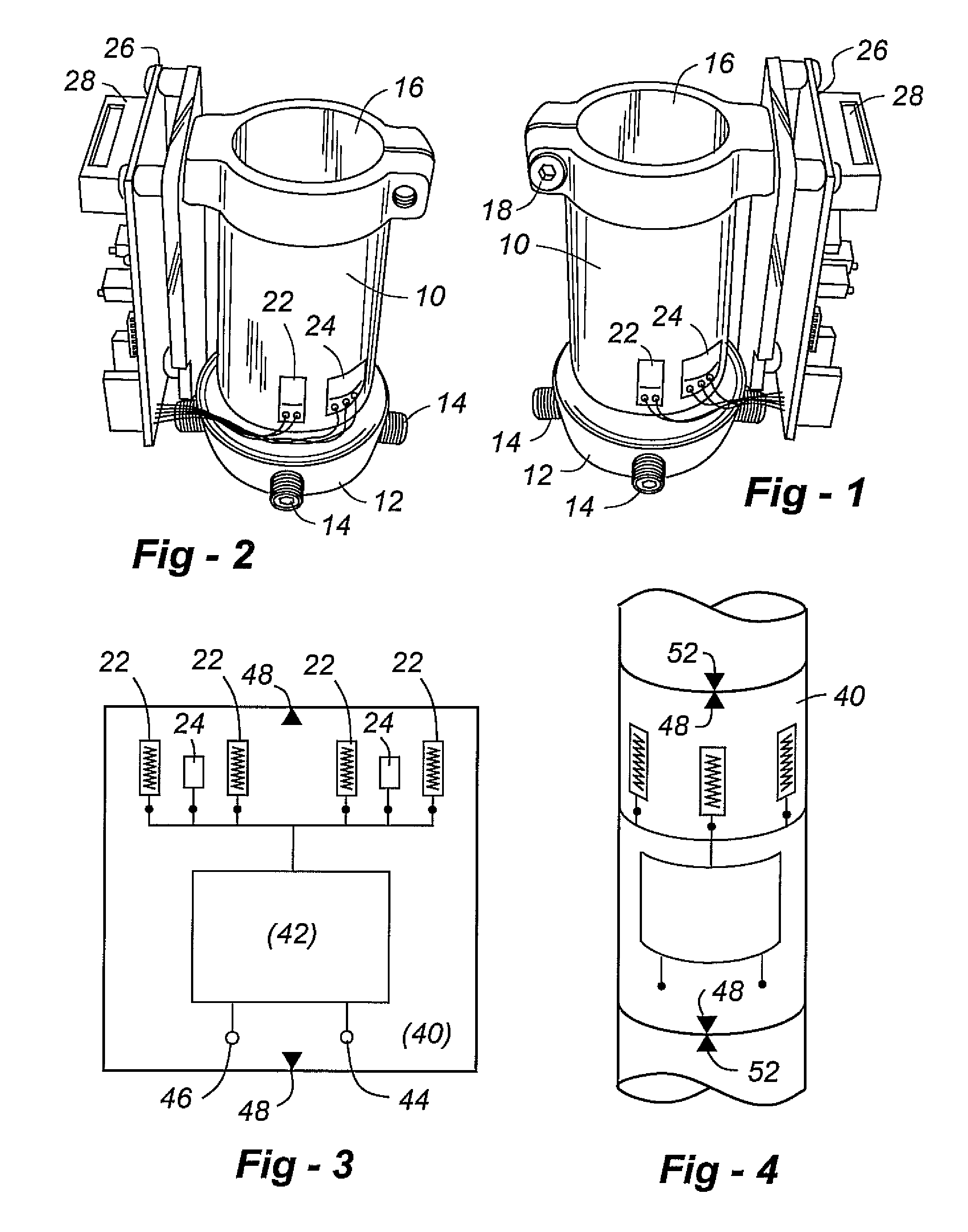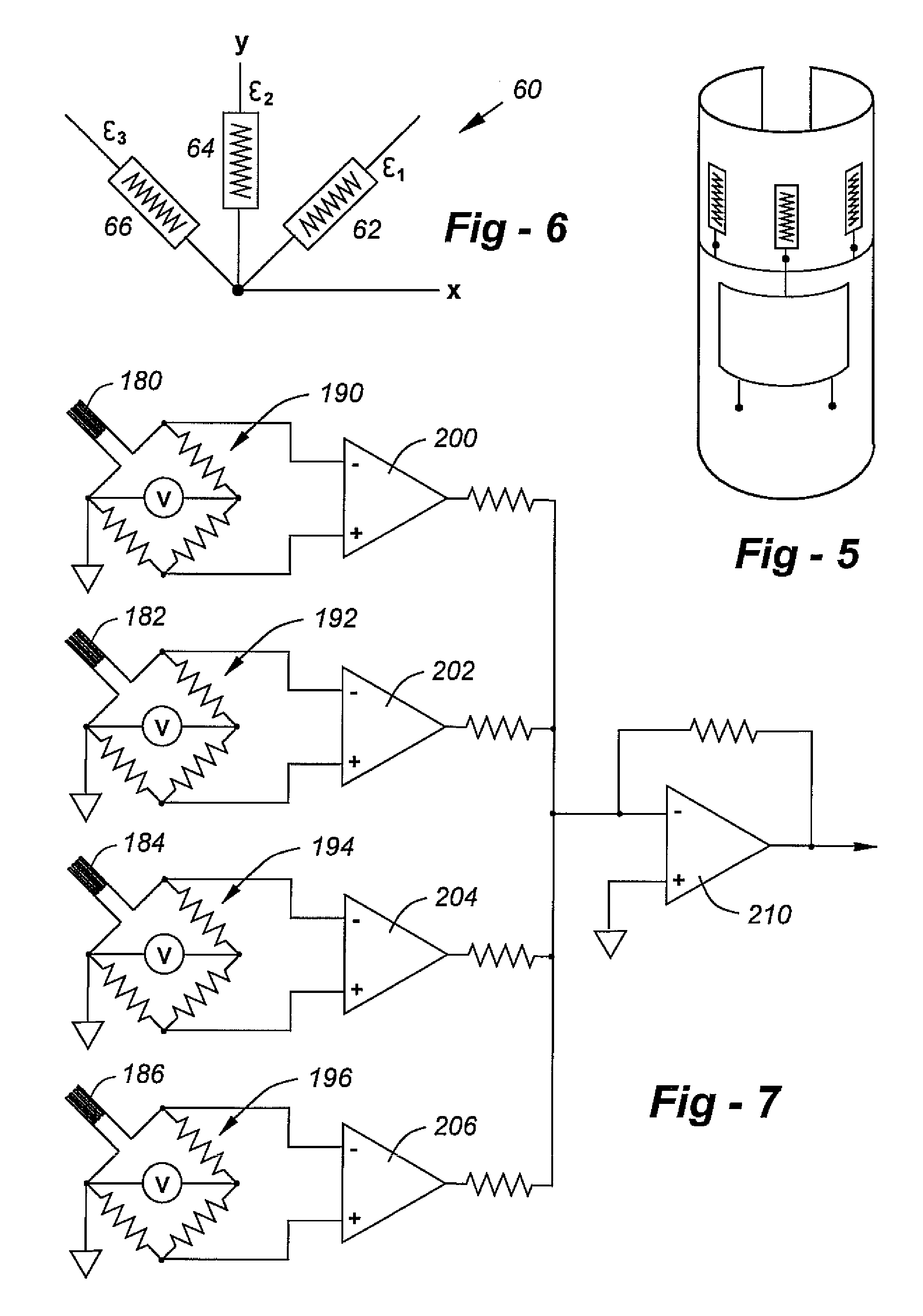Prosthetic sensing systems and methods
a sensing system and prosthetic technology, applied in the field of prosthetic sensing systems and methods, can solve the problems of difficult use, interfere with a normal range of motion, and relatively limited data, and achieve the effect of analyzing a more complex gait pattern and enhancing versatility
- Summary
- Abstract
- Description
- Claims
- Application Information
AI Technical Summary
Benefits of technology
Problems solved by technology
Method used
Image
Examples
Embodiment Construction
[0025]This invention relates to systems and methods for sensing forces, moments, temperature, inclination, acceleration and other parameters associated with prosthetic limbs. The preferred embodiments are capable of measuring forces relative to three designated axes, and moments about the same designated axes, for a total of six possible degrees of freedom associated with the object in three-dimensional space. The invention is applicable to legs and arms, with amputation or deficiency occurring at any point facilitating a workable coupling. In all cases a goal is to provide a sensing system that attaches to a prosthetic limb with no, or relatively minor, modification thereto.
[0026]One disclosed embodiment includes a support member to which a plurality of strain gauge sensors are affixed in a preselected pattern. Each strain gauge is operative to provide a change in one of its detectable characteristics, typically electrical resistance, in response to a strain imposed on the member. ...
PUM
 Login to View More
Login to View More Abstract
Description
Claims
Application Information
 Login to View More
Login to View More - R&D
- Intellectual Property
- Life Sciences
- Materials
- Tech Scout
- Unparalleled Data Quality
- Higher Quality Content
- 60% Fewer Hallucinations
Browse by: Latest US Patents, China's latest patents, Technical Efficacy Thesaurus, Application Domain, Technology Topic, Popular Technical Reports.
© 2025 PatSnap. All rights reserved.Legal|Privacy policy|Modern Slavery Act Transparency Statement|Sitemap|About US| Contact US: help@patsnap.com



